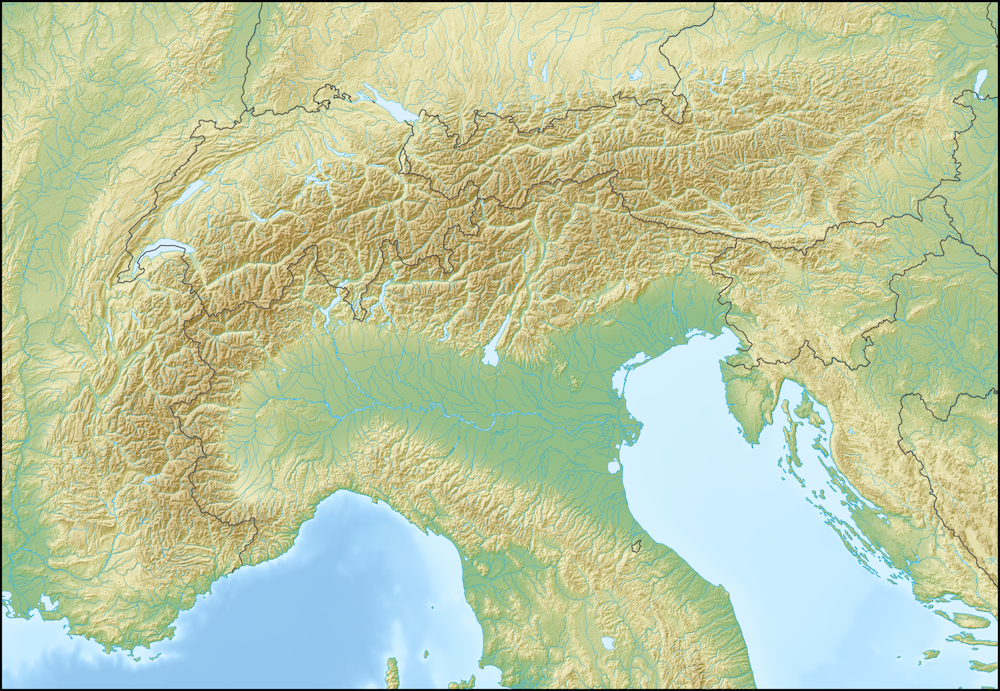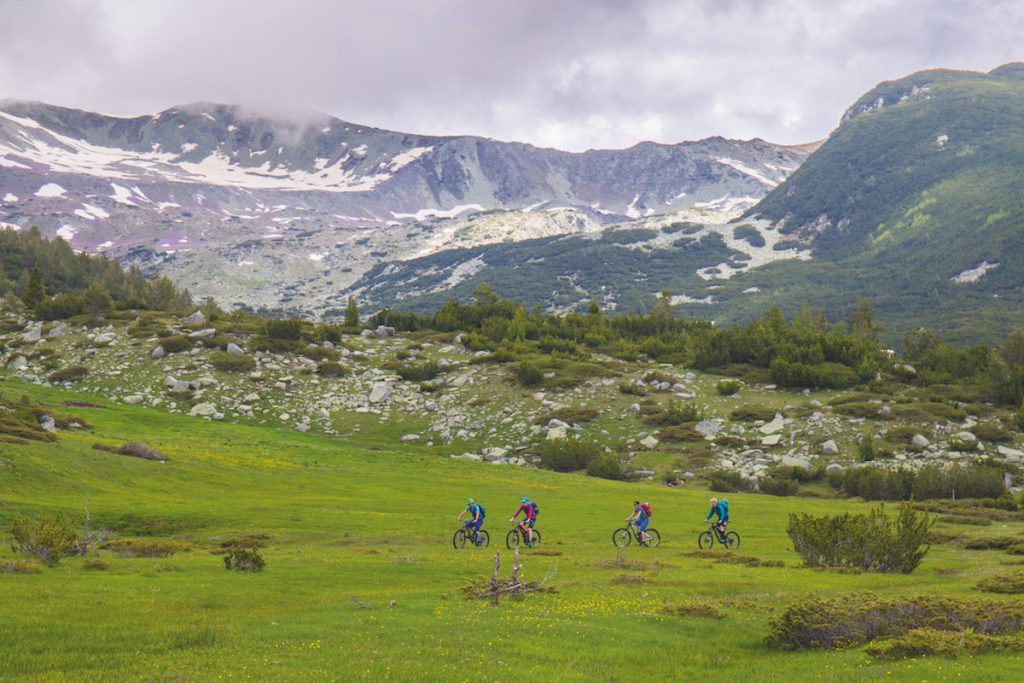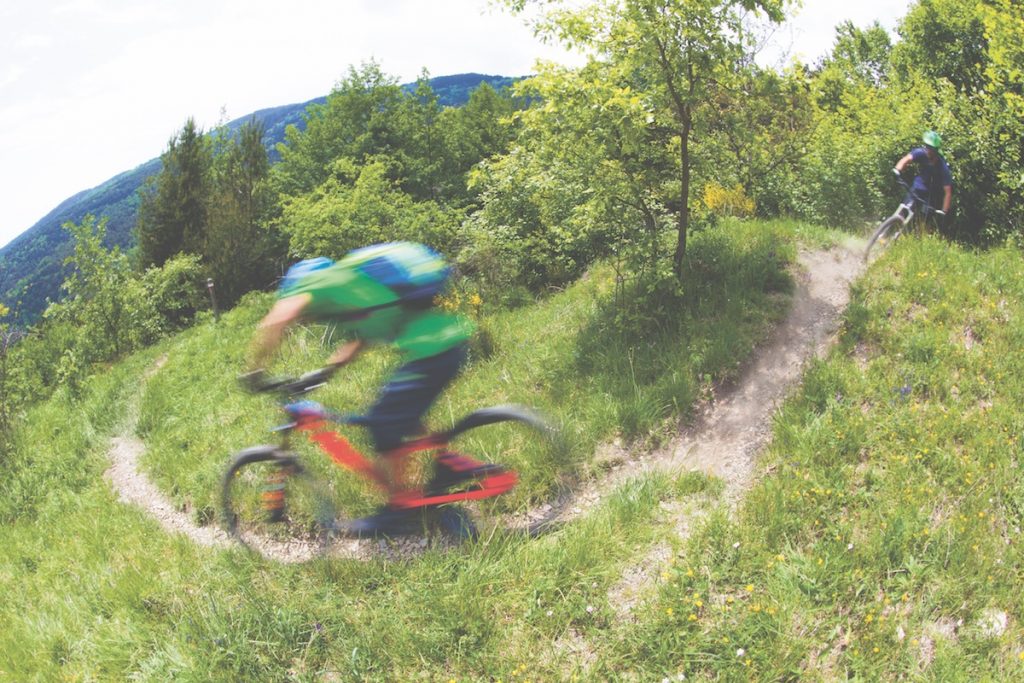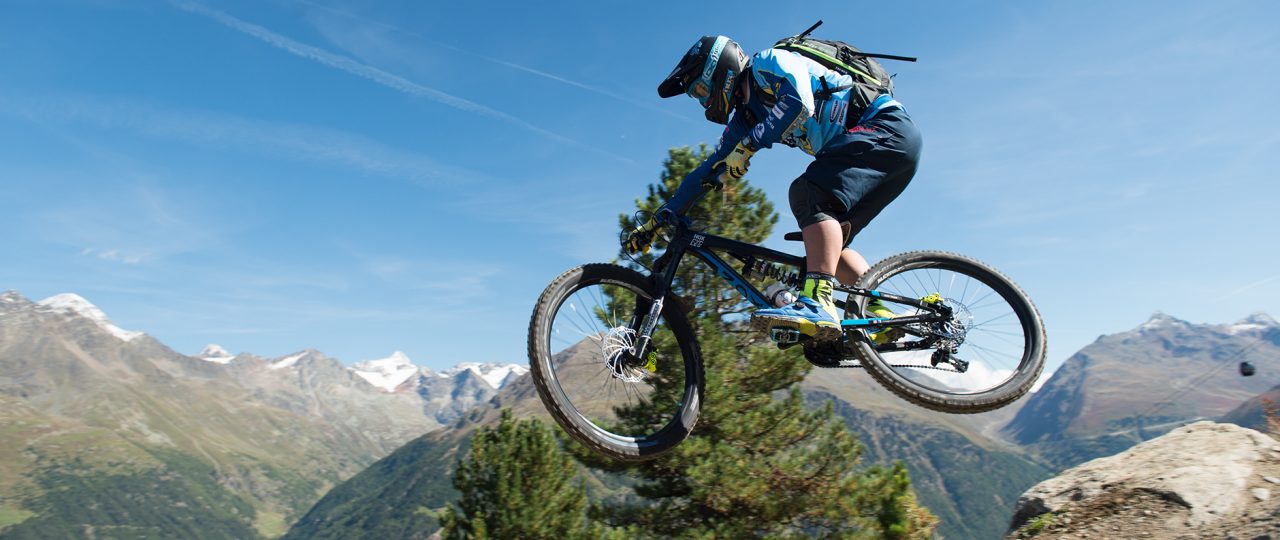Transalp - The King of All Alpine Bike Tours
The dream of crossing the Alps by bike isn't just reserved for pro bikers thanks to the many possible routes. So should you consider when planning your Trans Alpine (Transalp) route? How do you prepare? And what do the pros say about preparing for a Transalp?

The Right Preparation for a Transalp
First off all, you need to find the route that's right for you. You need to evaluate your endurance, your riding technique, as well as your ability to navigate in the mountains. The classic beginner's Transalp is the "Via Claudia Augusta" from Ehrwald to Lago di Garda. It's only about 13,000 ft (4,000 m) vertical gain in seven days. Beginner bonus: pushing or carrying your bike isn't necessary.
If you want to really push the boat out, Deuter athlete and bike legend Hans "No Way" Rey suggests you try the route from Schwangau to Lago di Garda. It's considered one of the hardest routes with a vertical gain of almost 42,000 ft (13,500 m) and a raft of technically difficult parts.
There's no limit to the creativity and level of difficulty you can find when putting together a Transalp.

Navigation
On this most important topic, Deuter athlete and bike-pro Gerhard Czerner says: "The base for navigation should always be a map. I'd never go on a bigger tour without one. It never runs out of batteries and never has technical problems. A GPS device makes things easier if used additionally since you don't have to stop to look at it all the time. It's important to practice using it, though. So use it at home, get to know it's peculiarities and functions so you know how to use it when you really have to."
It is also important to consider weather conditions. Bad weather can be a spanner in the works. Have a plan B.

Training Your Little Heart Out
One thing is certain: even the easiest Transalp is impossible without prior training. You spend hours on your bike, you have to master difficult passages, and sometimes you have to push your bike. Once you get up higher it becomes more difficult. In addition, you can't compare biking in your average mountains to biking at high altitude. Train your stamina as well as your muscular endurance and work on your technique.
And don't forget your bottom. It needs to be hardened, too. Seriously, the strain on your bum with the backpack and long days in the saddle over uneven terrain are not to be underrated!
Czerner suggests: "The most important thing is to spend lots of hours in the saddle. Six hours on your bike is commonplace during a Transalp. Your body has to get used to that. You should complement your evening rounds with long tours on the weekends and spend two or three days in a row biking. That means cutting down on rest between your rides. When you're on your Transalp it's important to ride without going all-out as opposed to your evening rounds."

Gear – Lightweight and Functional
The most important thing here is your backpack. It should be lightweight without reducing comfort. You will have to wear it for days on end. Be sure it has a good and compact fit as well as a well-thought-out back system. The Deuter Trans Alpine backpack is a fine choice. Of course, we're a little biased, but the fact that bike pros like Andi Heckmair, the godfather and inventor of the Transalp, and Gerhard Czerner, bike pro and expedition biker, were involved in designing the Trans Alpine helps back up our claim.
You shouldn't exceed 17 lbs (8 kg) when packing your backpack. Choose light and functional clothes. It's also useful to attach your tools, spare parts and pump to the frame of your bike or to store them in the dedicated tool compartments of your backpack. A first-aid-kit is also mandatory in your baggage.
"As little as possible, as much as necessary." This saying isn't just a lame proverb but imperative when packing for your Transalp.

"What you'll need for your transalp is very individual," says Gerhard Czerner. "It depends on your route, the number of days and where you'll spend your nights. Even more important is your comfort level. What some see as "just fine" may be too cold, too wet, too uncomfortable for someone else."
Now what are you still doing here? Get out there and starting training!
Check out some pro packing tips from Gerhard Czerner here:
